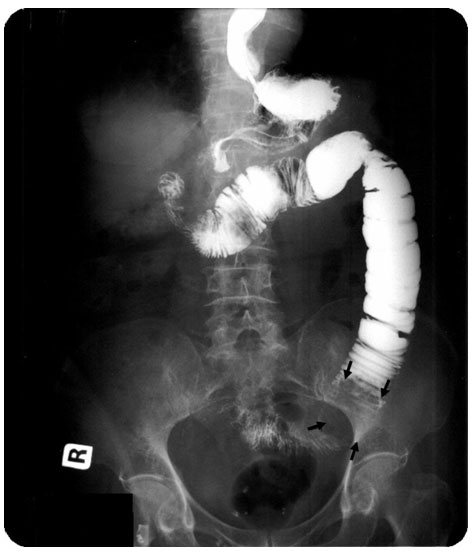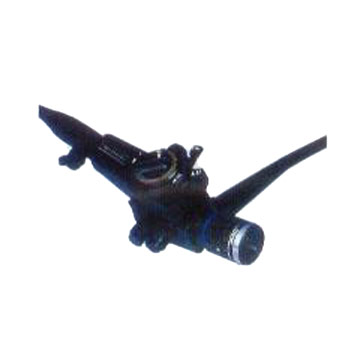|
Wireless Capsule Endoscopy
Related Techniques
Wireless capsule endoscopy is meant to supplement or replace several existing diagnostic procedures. Each of the following technologies can provide information on the condition of the digestive tract, especially the small intestine. [3]
Barium Series
In this procedure the patient ingests liquid barium and then a series of x-rays taken. The barium is opaque to the x-rays and makes the intestine visible on the x-ray [8].

www.medcyclopaedia.com
Ultrasound
Ultrasonic radiation is used to image the intestines through from outside the abdomen. The resolution of intestinal ultrasound is poor but it is non-invasive. Abnormally thickened intestinal wall and abscesses can be seen with ultrasound [5].

www.medcyclopaedia.com
The image above shows an ultrasound image of the bowel.
Endoscopy
Endoscopy is the established technique that most closely resembles wireless capsule endoscopy. A flexible endoscope is inserted into the intestines or the esophagus allowing the doctor to observe and record images of the inside surface of these organs. Push enteroscopy is endoscopy with an unusually long endoscope that can reach parts, but not all of the small intestine. Wireless capsule endoscopy was developed to reach regions of the intestine that push enteroscopy could not [8].

www.medtrue.en.alibaba.com
The image above is an endoscope made by Medtrue Enterprise Co., Ltd..
|

